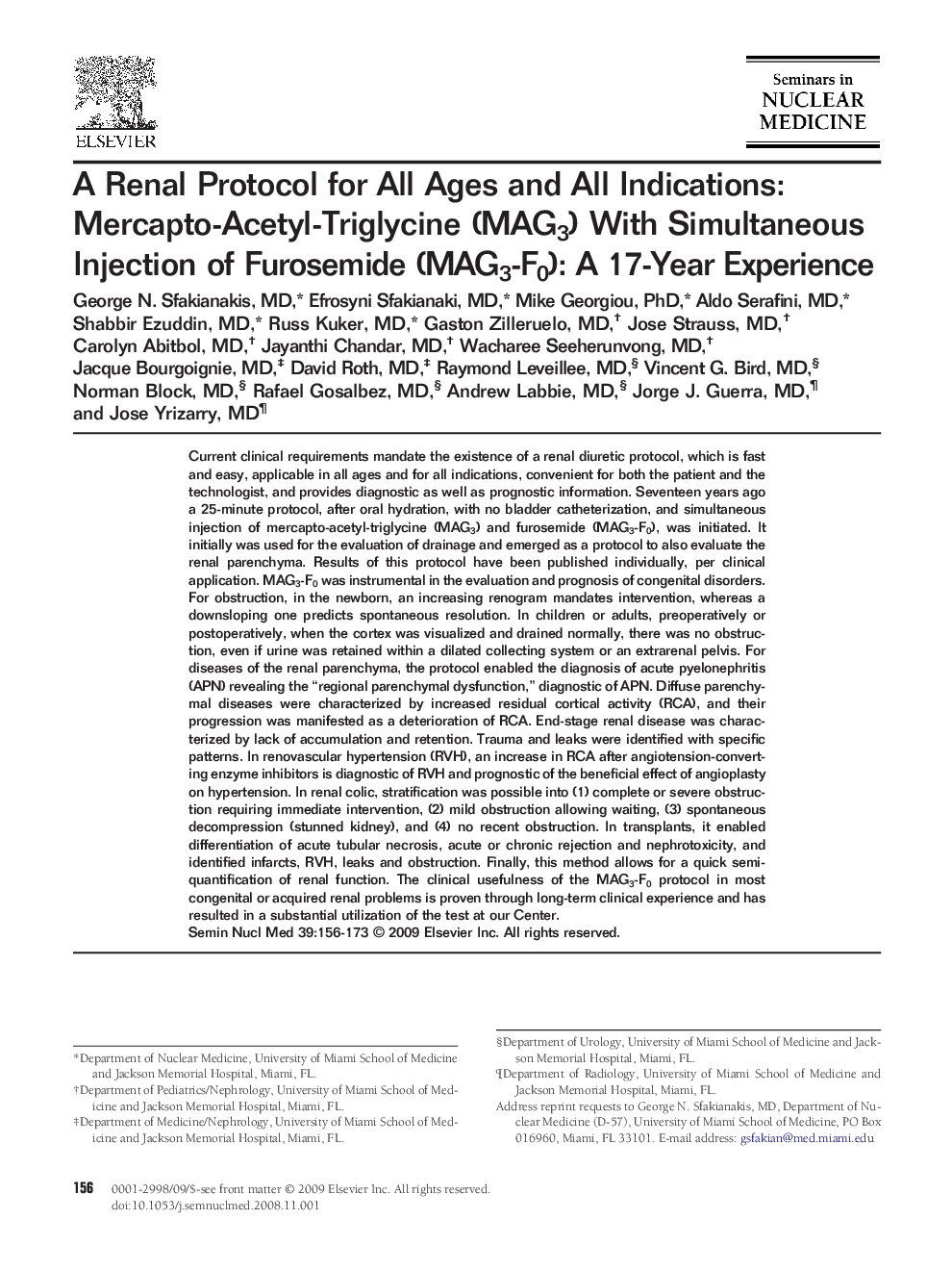| Article ID | Journal | Published Year | Pages | File Type |
|---|---|---|---|---|
| 4251388 | Seminars in Nuclear Medicine | 2009 | 18 Pages |
Current clinical requirements mandate the existence of a renal diuretic protocol, which is fast and easy, applicable in all ages and for all indications, convenient for both the patient and the technologist, and provides diagnostic as well as prognostic information. Seventeen years ago a 25-minute protocol, after oral hydration, with no bladder catheterization, and simultaneous injection of mercapto-acetyl-triglycine (MAG3) and furosemide (MAG3-F0), was initiated. It initially was used for the evaluation of drainage and emerged as a protocol to also evaluate the renal parenchyma. Results of this protocol have been published individually, per clinical application. MAG3-F0 was instrumental in the evaluation and prognosis of congenital disorders. For obstruction, in the newborn, an increasing renogram mandates intervention, whereas a downsloping one predicts spontaneous resolution. In children or adults, preoperatively or postoperatively, when the cortex was visualized and drained normally, there was no obstruction, even if urine was retained within a dilated collecting system or an extrarenal pelvis. For diseases of the renal parenchyma, the protocol enabled the diagnosis of acute pyelonephritis (APN) revealing the “regional parenchymal dysfunction,” diagnostic of APN. Diffuse parenchymal diseases were characterized by increased residual cortical activity (RCA), and their progression was manifested as a deterioration of RCA. End-stage renal disease was characterized by lack of accumulation and retention. Trauma and leaks were identified with specific patterns. In renovascular hypertension (RVH), an increase in RCA after angiotension-converting enzyme inhibitors is diagnostic of RVH and prognostic of the beneficial effect of angioplasty on hypertension. In renal colic, stratification was possible into (1) complete or severe obstruction requiring immediate intervention, (2) mild obstruction allowing waiting, (3) spontaneous decompression (stunned kidney), and (4) no recent obstruction. In transplants, it enabled differentiation of acute tubular necrosis, acute or chronic rejection and nephrotoxicity, and identified infarcts, RVH, leaks and obstruction. Finally, this method allows for a quick semiquantification of renal function. The clinical usefulness of the MAG3-F0 protocol in most congenital or acquired renal problems is proven through long-term clinical experience and has resulted in a substantial utilization of the test at our Center.
